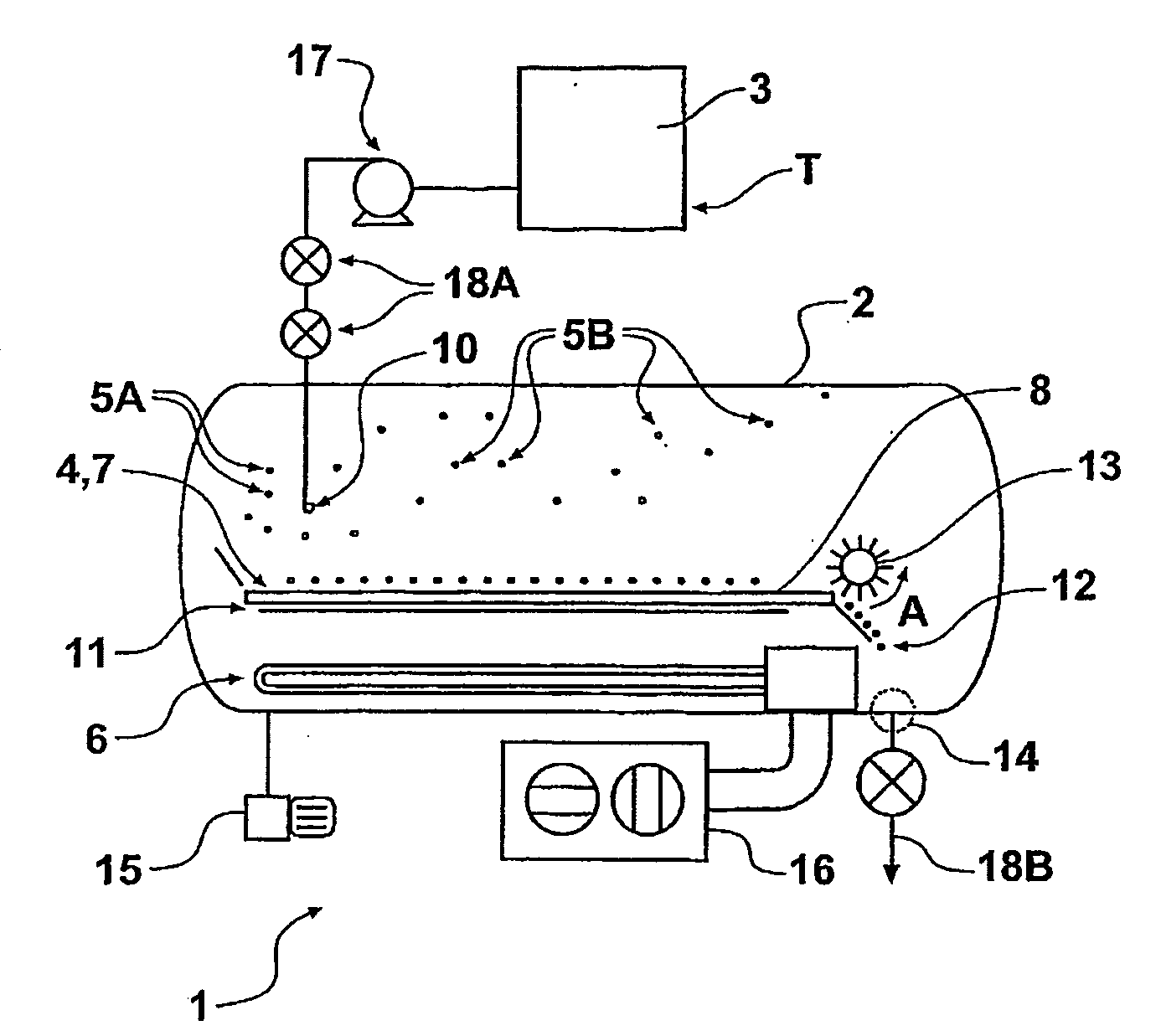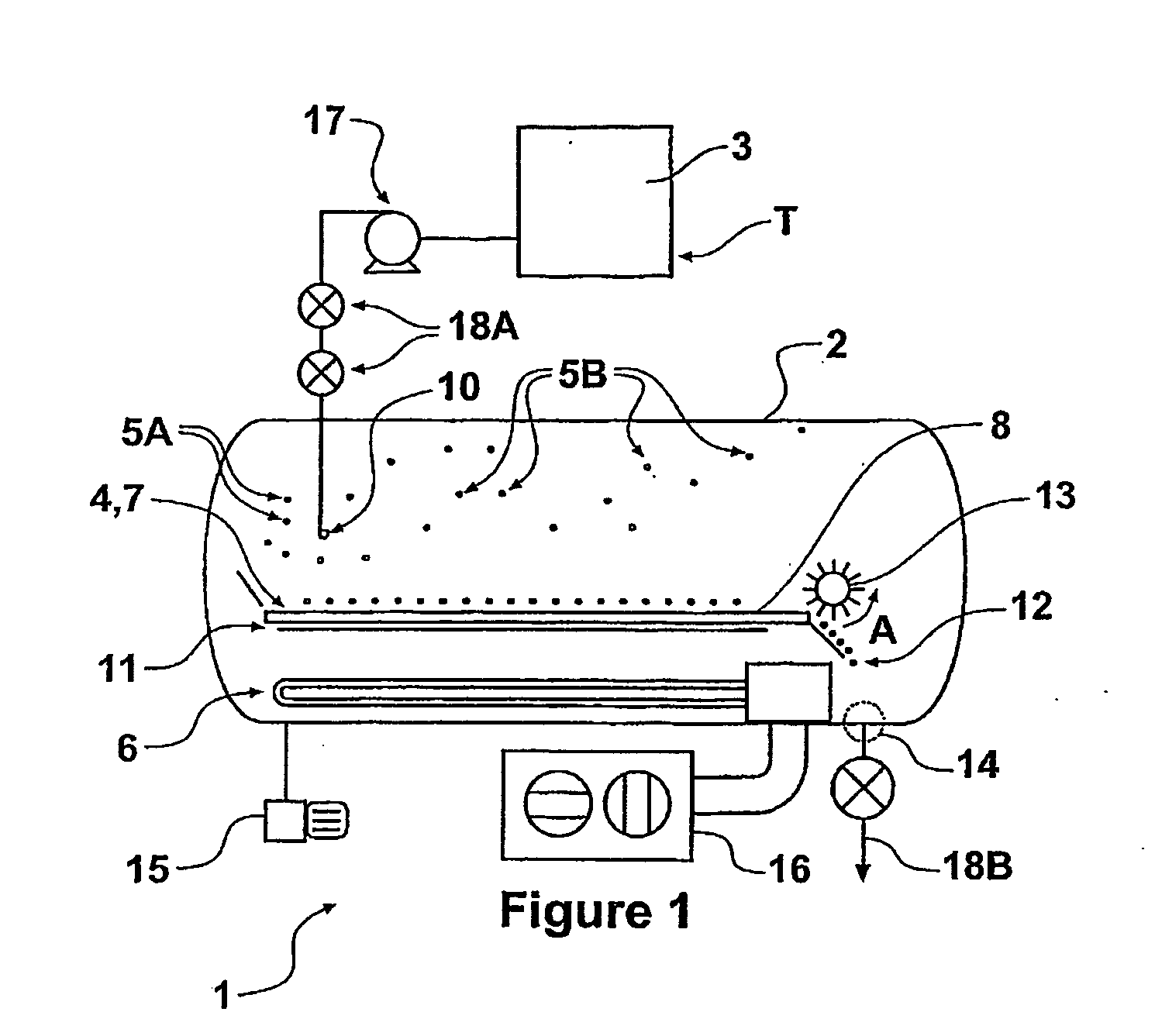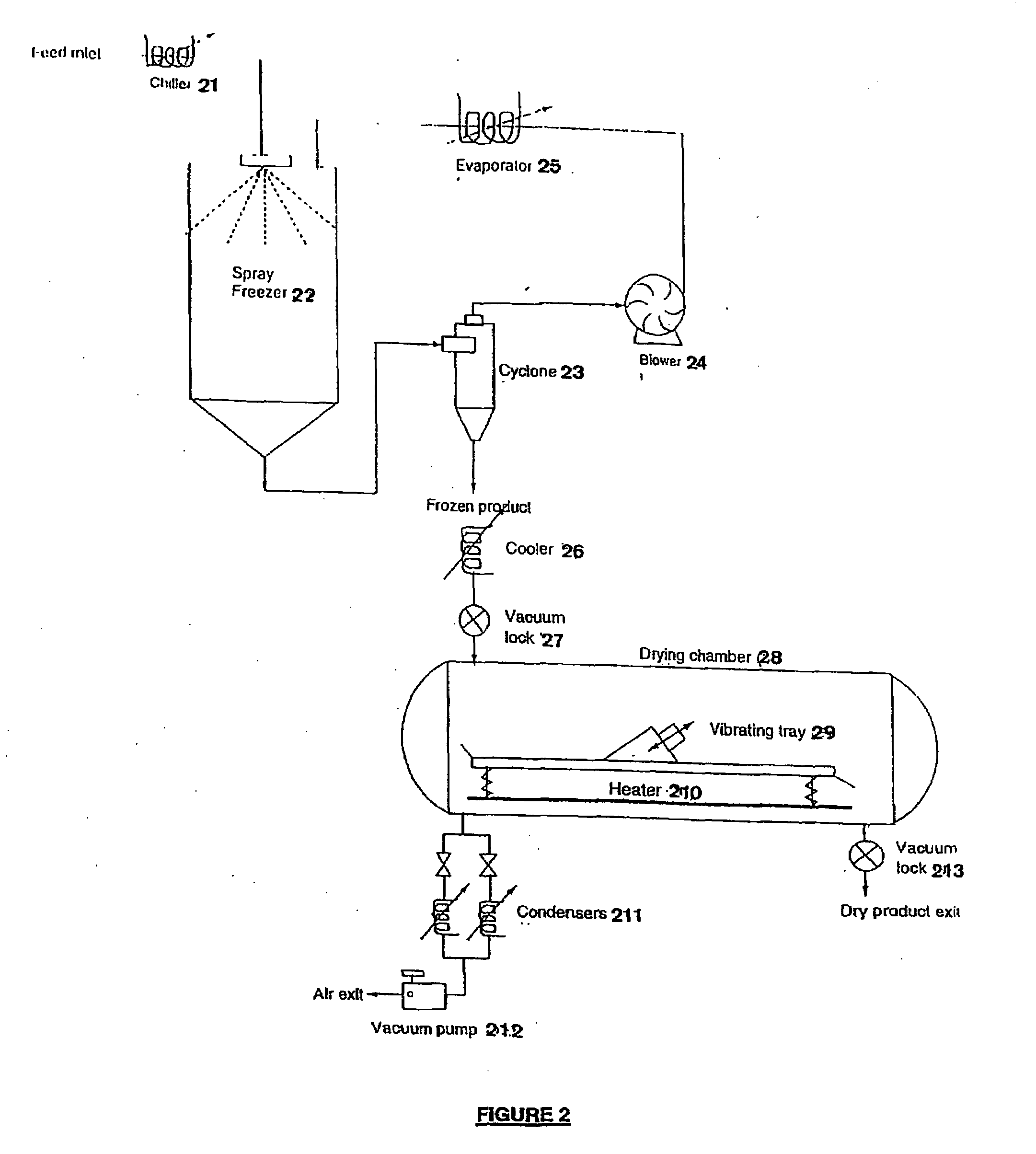Drying Process and Apparatus
a technology of drying process and drying apparatus, which is applied in the direction of drying machine, lighting and heating apparatus, and separation process, etc., can solve the problems of product shrinkage and other detrimental effects, undesirable damage to the product, and poorly optimised processing equipment often with excess capacity
- Summary
- Abstract
- Description
- Claims
- Application Information
AI Technical Summary
Benefits of technology
Problems solved by technology
Method used
Image
Examples
Embodiment Construction
[0153]The present invention may now be described with reference to FIGS. 1 to 5, and the accompanying description below.
[0154]The present invention relates to process for freeze drying or dehydrating / concentrating liquid substances. The process is applicable to liquids having a solid substance in suspension (for example milk) or to liquid solutions in which a substance has been dissolved. Tea, coffee, fruit juice, pharmaceuticals and nutraceuticals could also be processed using this spray freeze dryer.
[0155]Freeze drying is a useful preservation technique and among many other products, the following may be dried in this manner; instant coffee, vegetables for dried soup mixes, mushrooms, herbs, spices, cheese starter cultures, shrimp, fruits for ready-to-eat breakfast cereals, nutraceuticals, pharmaceuticals and agriceuticals.
[0156]Some specific end users of freeze dried products may Include the production of military and / or space rations as well as light weight camping foods contain...
PUM
| Property | Measurement | Unit |
|---|---|---|
| Pressure | aaaaa | aaaaa |
| Particle size | aaaaa | aaaaa |
| Particle size | aaaaa | aaaaa |
Abstract
Description
Claims
Application Information
 Login to View More
Login to View More - R&D
- Intellectual Property
- Life Sciences
- Materials
- Tech Scout
- Unparalleled Data Quality
- Higher Quality Content
- 60% Fewer Hallucinations
Browse by: Latest US Patents, China's latest patents, Technical Efficacy Thesaurus, Application Domain, Technology Topic, Popular Technical Reports.
© 2025 PatSnap. All rights reserved.Legal|Privacy policy|Modern Slavery Act Transparency Statement|Sitemap|About US| Contact US: help@patsnap.com



